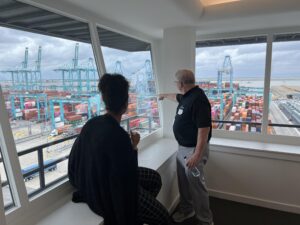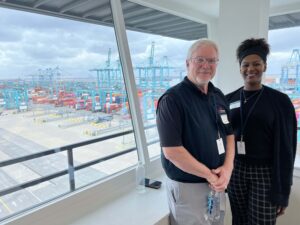We would like to thank the entire Kuehne+Nagel team for a very informative day. This day provided shippers with a unique opportunity to hear from experts in global supply chains.
The amount of information provided by your entire team really shows just how comprehensive your solutions are for global supply chains. https://us.kuehne-nagel.com/en/
The Port of Virginia tour with the team from the port was a perfect way to spend the afternoon and learn why Virginia is attracting new businesses. Why is the Port of Virginia “America’s most modern Gateway” ? There are many reasons but a $1.4B Gateway Investment Program is introducing more semi-automated processes and dredging the deepest, widest channels on the U.S. East Coast. https://www.portofvirginia.com





